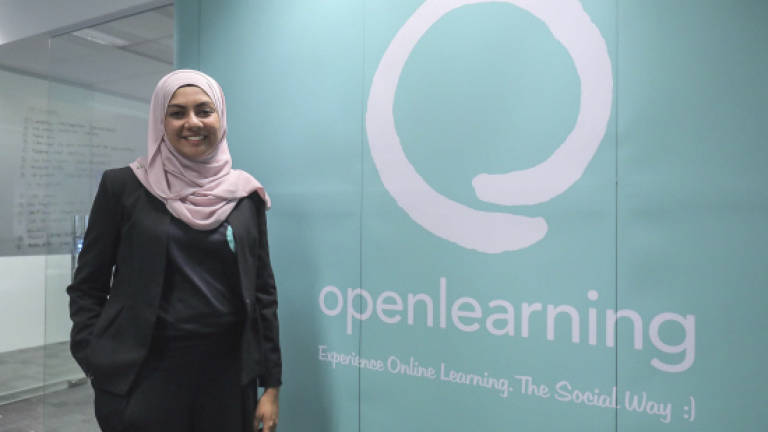Education in a digital age

As we hurtle towards realising Education 4.0 in the advent of the Fourth Industrial Revolution’s rapid evolution, the state of education and its boundaries are broken down and reformulated to adapt better to the needs of this digital intensive age.
Such is the case within a space in Q Sentral, Kuala Lumpur. Occupied by a team of 40, it is office to the Malaysian arm of OpenLearning, an Australian-based educational technology institution that provides a flourishing platform for online learning.
“Universities will engage us to develop online courses for them,” explains OpenLearning Malaysia’s head of learning services Marsyitah Ismail. These “courses” refer to the increasingly popular form of distance learning programmes termed “massive open online courses”, better known as MOOCs.
Spearheading three teams, Marsyitah and OpenLearning are transforming the traditional approach to learning by moving away from the norm, instead adapting the “flipped classroom method”.
“In a traditional classroom setting, you would sit and listen to the lectures, and there will be assignments given, to be completed back home,” Marsyitah states.
“Imagine if it’s flipped, where you listen to the lectures or start learning from the materials at home, then come to the classroom to work on the activities,” she suggests.
In this context, “class” refers to the online learning platform that OpenLearning offers, a social media-modeled hub that allows students to present their assignments, carry out activities per course requirements, liaise with teachers, and among other things, mentor other students or be mentored by seniors – all these and more.
These would only come into play after prospective students have chosen the specific subjects or courses they want to pursue, and given the concept of OpenLearning, that choice is ultimately in the hands of the student.
“Students can choose when and where they want to learn from. That’s the beauty of MOOCs,” Marsyitah informs. “Students are empowered, because they decide when they learn and how to go about it ... the choice of courses, etc.”
Driven by intrinsic motivation, MOOCs requires learners to be self motivated and interested at a personal level, as students have to take ownership of what they want to study, focus and master. The flexibility of the programme is the clearest dichotomy between online distance learning and a traditional lecture system of education.
The construction of interesting courses that placate both the education institute and prospective student is where OpenLearning comes into play.
“When it came to the learning design, the team made sure it was interesting, fun, motivating and is able to inspire the student. While brainstorming activities, we asked ourselves ‘If there were no marks for this activity, would students still do it?’,” Marsyitah shared.
During meetings with universities, OpenLearning makes sure the crux of the matter is first established. By knowing why educators want to introduce certain courses, what they intend to achieve, along with what they want their students to gain, OpenLearning delivers measurable outcomes.
“They need to make sure there’s a flow to their content, make sure that it intensifies, and the flow is right. There should be a connection, from one topic to another. What’s most important is how to inspire the student to keep them with the course,” Marsyitah discloses.
“We are a proponent of outcome-based assessments. Anything we do or design, the outcome serves as the backbone of the course. When we look at the content or activities, it has to fulfill the outcome”.
Benefits of OpenLearning:
►Accessible education at your fingertips, so long as there is an active internet connection.
►Continuity-based courses that push the drive to learn what comes next.
►Modeled after social media platforms.
►Flexible studying hours.
►Affordable.